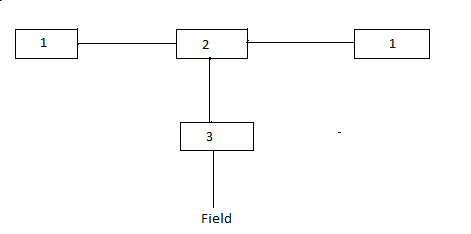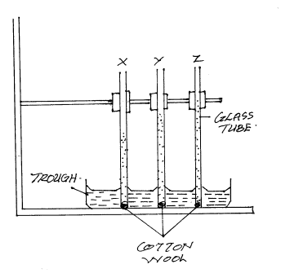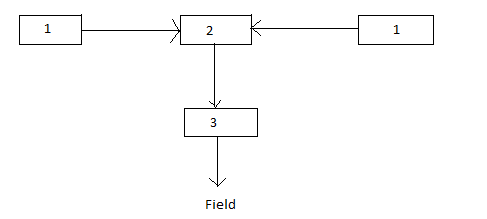INSTRUCTIONS
- This paper consists of three sections A, B and C.
- Answer all questions in section A and B and any other two questions in section C.
- Candidates must answer the questions in English.

QUESTIONS
SECTION A: 30 MARKS
Answer all questions in this section in the spaces provided
- Give four reasons why farmers are encouraged to practice organic farming (2marks)
- Distinguish between GDP and GNP (2marks)
- What is meant by the following terms (2marks)
- Seed inoculation
- Seed dressing
- Name four types of terraces (2marks)
- Name the routine field practice done by;
- Removal of extra suckers in a banana stool (1mark)
- Removal of old stems down to level of top foliage in pyrethrum (1mark)
- Removal of suckers from coffee bushes (1mark)
- State three characteristics of phosphatic fertilizers (1.5marks)
- Explain the relationship between scarcity and choice as used in agricultural economics (1mark)
- Outline four ways by which crop pests are classified (2marks)
- State four advantages of land consolidation (2marks)
- Outline three benefits derived from trees used in agroforestry (1½marks)
- State four practices which improve light intensity in crop production (2marks)
- Give four factors that influence the quality of hay (2marks)
- Outline two other methods of conserving forage in the farm (1mark)
- State four factors that determine the demand of a commodity in a free market (2marks)
- Give four varieties of tomatoes grown for processing (2marks)
- State two advantages of mixed farming (1mark)
- Name any two land tenure systems practiced in Kenya (1mark)
SECTION B: 20 MARKS
Answer all questions in the spaces provided
- Illustrated below is a method of turning compost. Study the method and answer the questions that follow.

- Identify the method (1mark)
- Using arrows in the diagram, show how the turning is done before the manure can be taken to the field (2marks)
- After how long should the compost be ready for use (1mark)
- Apart from the above named type of organic manure, name any other two types of organic manure (1mark)
- Below is a diagram of a tertiary operation. Study it and answer the questions that follow.

- Name the operation (1mark)
- Explain the process of performing the operation (1mark)
- Name the implement that can be used to achieve the operation (1mark)
- State the importance of carrying out the operation (2marks)
- Below is the diagram of a planting material. Study it and answer the questions that follow.

- Label the parts labelled i, ii and iii (3marks)
- State two factors that determine seed rate (2marks)
- Below is the set up of three different types of soil.

- State the aim of the experiment (1mark)
- State two ways of improving the soil structure labelled Z (1mark)
- Name three processes of rock weathering (3marks)
SECTION C: 40 MARKS
Answer any two questions from this section.
- Study the following information which was extracted from Mr Kibui’s farm records on 30th November 2022 and answer the questions that follow.
Loans payable to bank
Five milking cows
400 layers
20 goats
Debts payable to cooperative
Buildings and structures
Bonus payable to workers
Cattle feed in store
Animals drugs in store
Breakages to repair
Cash at hand
Cash in bank
Spray equipment
Debts receivable
Ksh.300,000
Ksh.250,000
Ksh.80,000
Ksh.30,000
Ksh.20,000
Ksh.600,000
Ksh.19,000
Ksh.10,000
Ksh.4,000
Ksh.30,000
Ksh.20,000
Ksh.30,000
Ksh.12,000
Ksh.18,000
- Prepare a balance sheet for Mr Kibui’s farm using the information above (8marks)
- Was Mr Kibui’s business concern solvent or insolvent (1mark)
- Name any other financial statement that can be found in Mr Kibui’s farm (1mark)
- Describe five factors to consider in siting farm structures (10marks)
- Describe the procedure of silage making (5marks)
- State five effects of wind on crop production (5marks)
- State five precautions that should be observed when harvesting cotton (5marks)
- Why should it be advisable to use a nursery in crop production (5marks)
-
- State five ways through which a farmer can adjust to risks and uncertainties in farming (5marks)
- Describe the marketing functions in agricultural economics (5marks)
- Describe the safety precautions a farmer should take when using herbicides (5marks)
- Explain five physical methods of pest control (5marks)

MARKING SCHEME
SECTION A: 30 MARKS
Answer all questions in this section in the spaces provided
- Give four reasons why farmers are encouraged to practice organic farming (2marks)
- Environment friendly
- Organic material are easily available
- Products fetch high prices in the international market
- Cheap as materials are locally available
- Distinguish between GDP and GNP (2marks)
- GDP is the sum total of all goods and services produced by a country within one year while GNP is the sum total of all goods and services produced by the nationals/citizens of a county ( mark as a whole )
- What is meant by the following terms (2marks)
- Seed inoculation
- Coating legumes with right strain of nitrogen fixing bacteria
- Seed dressing
- Coating seeds with right chemical to guard attack by soil borne pests and pathogens
- Seed inoculation
- Name four types of terraces (2marks)
- Narrow based terraces
- Broad based terraces
- Fanya juu terraces
- Fanya chini terraces
- Bench terraces
- Name the routine field practice done by;
- Removal of extra suckers in a banana stool (1mark)
- Banana stool management
- Removal of old stems down to level of top foliage in pyrethrum (1mark)
- Cutting back in pyrethrum
- Removal of suckers from coffee bushes (1mark)
- Desuckering in coffee
- Removal of extra suckers in a banana stool (1mark)
- State three characteristics of phosphatic fertilizers (1.5marks)
- Sparingly soluble in water
- Have a long residue effect in soil
- Not liable to leaching
- Have a slight scorching effect
- Explain the relationship between scarcity and choice as used in agricultural economics (1mark)
- Scarcity is where production resources are limited in supply relative to demand therefore a choice has to be made which enterprises to allocate the limited resources (mark as a whole)
- Outline four ways by which crop pests are classified (2marks)
- Mode of feeding
- Crops attacked
- Stage of development of the pest
- Stage of crop growth of the crop
- Scientific classification
- Level of damage
- Habitat/where they are found
- State four advantages of land consolidation (2marks)
- Proper supervision
- Reduce transport cost
- Control soil erosion by building soil and water conservation structures
- Easier access to extension services
- Sound farm planning
- Outline three benefits derived from trees used in agroforestry (1½marks)
- Sources of wood fuel
- Used in soil and water conservation
- Source of livestock feeds
- Source of income
- Source of fencing material
- Saves on labour spent on fetching firewood
- Has aesthetic value
- State four practices which improve light intensity in crop production (2marks)
- Pruning
- Weeding
- Thinning
- Wider spacing
- Give four factors that influence the quality of hay (2marks)
- Stage of harvesting
- Length of drying period
- Species of crops
- Storage conditions
- Leaf stem ratio
- Weather conditions during the drying process
- Outline two other methods of conserving forage in the farm (1mark)
- Standing forage
- Silage
- State four factors that determine the demand of a commodity in a free market (2marks)
- Advertisement
- Price of related goods
- Level of income
- Taste and preference of the consumers
- Give four varieties of tomatoes grown for processing (2marks)
- Primabel
- San marzano
- Cal J
- Seinz
- Kenya beauty
- Rulgers 10x hybrid
- State two advantages of mixed farming (1mark)
- There is mutual benefit between crops and livestock
- Total failure cannot be experienced because it is a method of diversification
- It gives maximum utilization of the available land
- The farmer has a constant flow of income throughout the year
- Available labour is properly utilized throughout the year
- Where legumes forms part of the crops soil fertility is maintained
- Name any two land systems practiced in Kenya (1mark)
- Leasehold/landlordism/tenancy
- Company/ concession
- Individual ownership/ individual owner operator
- State ownership/government ownership
- Cooperative land tenure
SECTION B: 20 MARKS
Answer all questions in the spaces provided
- Illustrated below is a method of turning compost. Study the method and answer the questions that follow.
- Identify the method (1mark)
- Four heap system
- Using arrows in the diagram, show how the turning is done before the manure can be taken to the field (2marks)

- After how long should the compost be ready (1mark)
- Three months
- Apart from the above named type of organic manure, name any other two types of organic manure (1mark)
- Green manure
- Farmyard manure
- Identify the method (1mark)
- Below is a diagram of a tertiary operation. Study it and answer the questions that follow.
- Name the operation (1mark)
- Ridging
- Explain the process of performing the operation (1mark)
- The soil is dug in a continuous line and heaped on the sides to form a bund/ridge
- Name the implement that can be used to achieve the operation (1mark)
- Ridger
- State the importance of carrying out the operation (2marks)
- Promotes expansion of tubers
- Facilitates easy harvesting of root crops
- Helps to conserve soil and water
- Facilitates drainage in water logged soils
- Prevents greening of Irish potato tubers
- Name the operation (1mark)
- Below is the diagram of a planting material. Study it and answer the questions that follow.
- Label the parts labelled i, ii and iii (3marks)
- Crown
- Slip
- Sucker
- State two factors that determine seed rate (2marks)
- Number of seeds per hole
- Germination percentage
- Seed purity
- Purpose for which the crop will be put
- Spacing used
- Label the parts labelled i, ii and iii (3marks)
- Below is the set up of three different types of soil.
- State the aim of the experiment (1mark)
- To compare capillarity of different types of soil
- State two ways of improving the soil structure labelled Z (1mark)
- Draining water from the soil
- Planting trees with high water uptake e.g. eucalyptus
- Name three processes of rock weathering (3marks)
- Physical/mechanical
- Chemical
- Biological
- State the aim of the experiment (1mark)
SECTION C: 40 MARKS
Answer any two questions from this section.
- Study the following information which was extracted from Mr Kibuli’s farm records on 30th November 2022 and answer the questions that follow.
- Prepare a balance sheet for Mr Kibuli’s farm using the information above (8marks)
ASSETS
AMOUNT
LIABILITIES
AMOUNT
Fixed assets
Kshs
Cts
Long term liabilities
Kshs
Cts
Building and structure
600,000
00
Loan payable at bank
300,000
00
Fixed milking cows
250,000
00
Short term liabilities
400 layers
80,000
00
Debts to cooperative
20,000
00
20 goats
30,000
00
Bonus payable to workers
19,000
00
Spray equipment
12,000
00
Breakages to repair
30,000
00
Total
972,000
00
Total
369,000
00
Current assets
Capital/net worth
Cattle feed in store
10,000
00
Owners’ equity
685,000
00
Animal drugs in store
4,000
00
Cash at hand
20,000
00
Cash at bank
30,000
00
Debts receivable
18,000
00
TOTAL
1,054,000
00
TOTAL
1,054,000
00
- Was Mr Kibui’s business concern solvent or insolvent (1mark)
- Solvent
- Name any other financial statement that can be found in Mr Kibui’s farm (1mark)
- Cash analysis statement
- Profit and loss account
- Describe five factors to consider in siting farm structures (10marks)
- Purpose of the structure
- Nearness to social amenities
- Farmers taste and preferences
- Space for future expansion
- Relationship with other existing structures
- Position of the sun for better lighting
- Direction of prevailing winds
- Government regulation
- Type of soil
- Security for some enterprises e.g. poultry
- Prepare a balance sheet for Mr Kibuli’s farm using the information above (8marks)
-
- Describe the procedure of silage making (5marks)
- Prepare the silo
- Cut the forage at the recommended stage of growth
- Wilt for 8-12 hours and to a moisture content of 65-75%
- Chop the wilted forage into fine pieces
- Fill the silo and compact after every 10-12 cm layer formation
- Fill rapidly
- Check temperature level and ensure that it’s within 31°C. Compact further or add molasses if below 31°C
- Cover with a polythene sheet or dry grass. Put soil
- Dig a trench all round to drain off rain water
- State five effects of wind on crop production (5marks)
- Can cause damage to farm structure
- Acts as agent of pollution
- Contributes to crop lodging
- It increases the rate of disease spread
- It increases the rate of evapo-transpiration
- Acts as an agent of seed dispersal
- Carries away rain bearing clouds
- State five precautions that should be observed when harvesting cotton (5marks)
- Picking should not be done when wet
- Pick on weekly basis for maintenance of quality
- Avoid using sisal bags as the fibres would give ginning problems
- Avoid mixing of seed cotton with leaves and twigs
- Dry the picked cotton further before dispatch for maintenance of quality
- Why should it be advisable to use a nursery in crop production (5marks)
- Tender seedlings are given maximum attention
- Helps raising of crops whose seeds are tiny and cannot be planted directly in the seed bed
- Enables raising of many seedlings in a small plot of land
- Extra seedlings can be sold to earn income
- Crops takes a shorter time in the field
- Enables selection of healthy and vigorously growing seedling
- Gives a high germination percentage – lower seed rate is used
- Facilitates easy undertaking of management practices
- Describe the procedure of silage making (5marks)
-
- State five ways through which a farmer can adjust to risks and uncertainties in farming (5marks)
- Diversification
- Contractual farming
- Insurance
- Input rationing
- Flexibility in production method
- Adopting modern methods
- Describe the marketing functions in agricultural economics (5marks)
- Advertising
- Provide finances
- Transportation
- Storage
- Packaging
- Processing
- Grading
- Assembling
- Buying
- Gathering/assembling
- Describe the safety precautions a farmer should take when using herbicides (5marks)
- Wear protective clothing
- Avoid inhaling herbicides
- Read manufacturer’s instructions and follow
- Avoid sucking/blowing blocked nozzles
- Wash thoroughly after handling herbicides
- Keep herbicides out of reach of children
- Spray in calm weather
- After, wash the equipment thoroughly
- Explain five physical methods of pest control (5marks)
- Use of lethel temperatures
- Proper drying of produce
- Flooding
- Suffocation
- Physical destruction
- Use of physical barrier
- Use of electromagnetic radiation
- State five ways through which a farmer can adjust to risks and uncertainties in farming (5marks)
Download Agriculture Paper 1 Questions and Answers - Cekana Mock Exams 2023.
Tap Here to Download for 50/-
Get on WhatsApp for 50/-
Why download?
- ✔ To read offline at any time.
- ✔ To Print at your convenience
- ✔ Share Easily with Friends / Students
